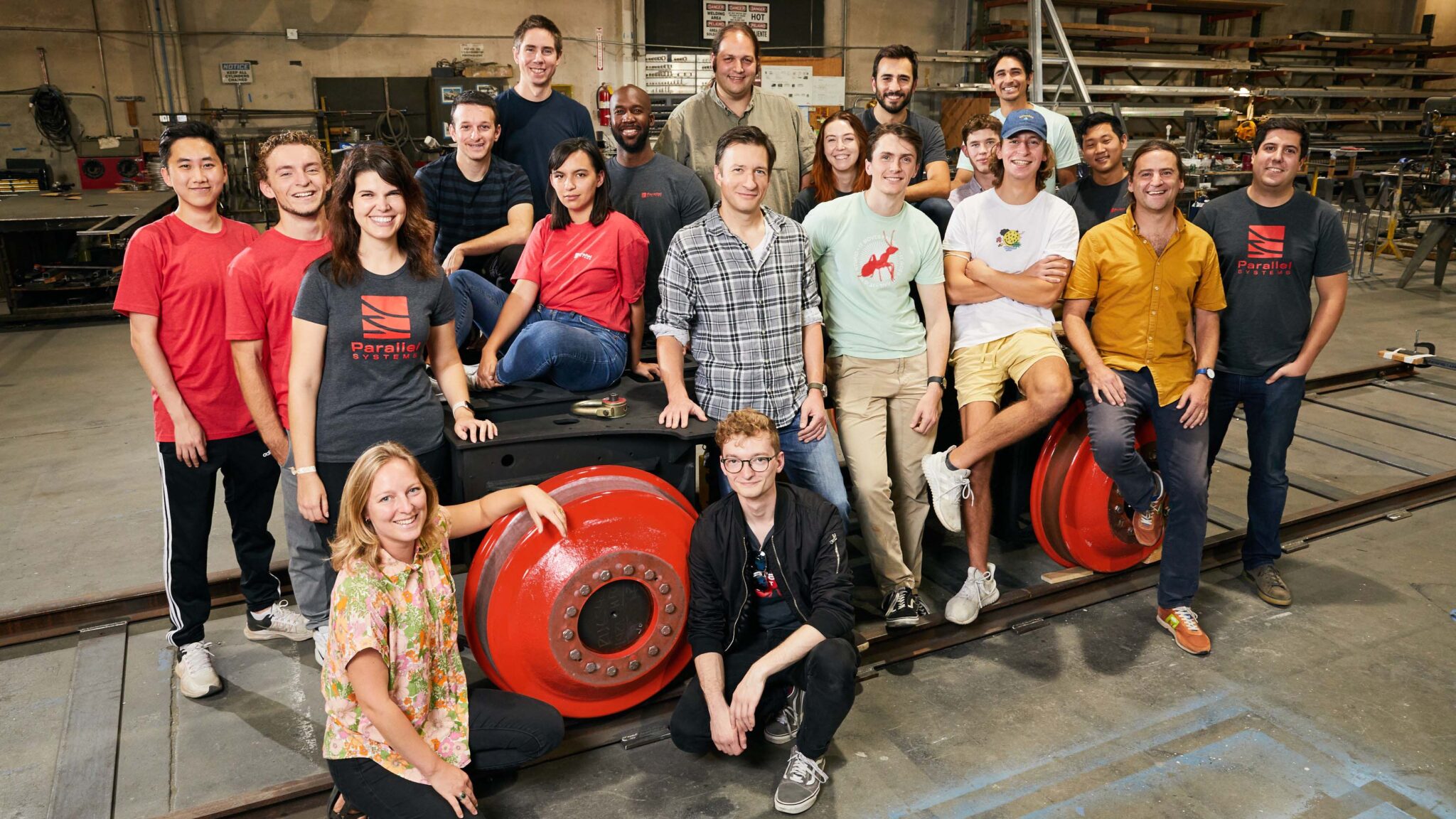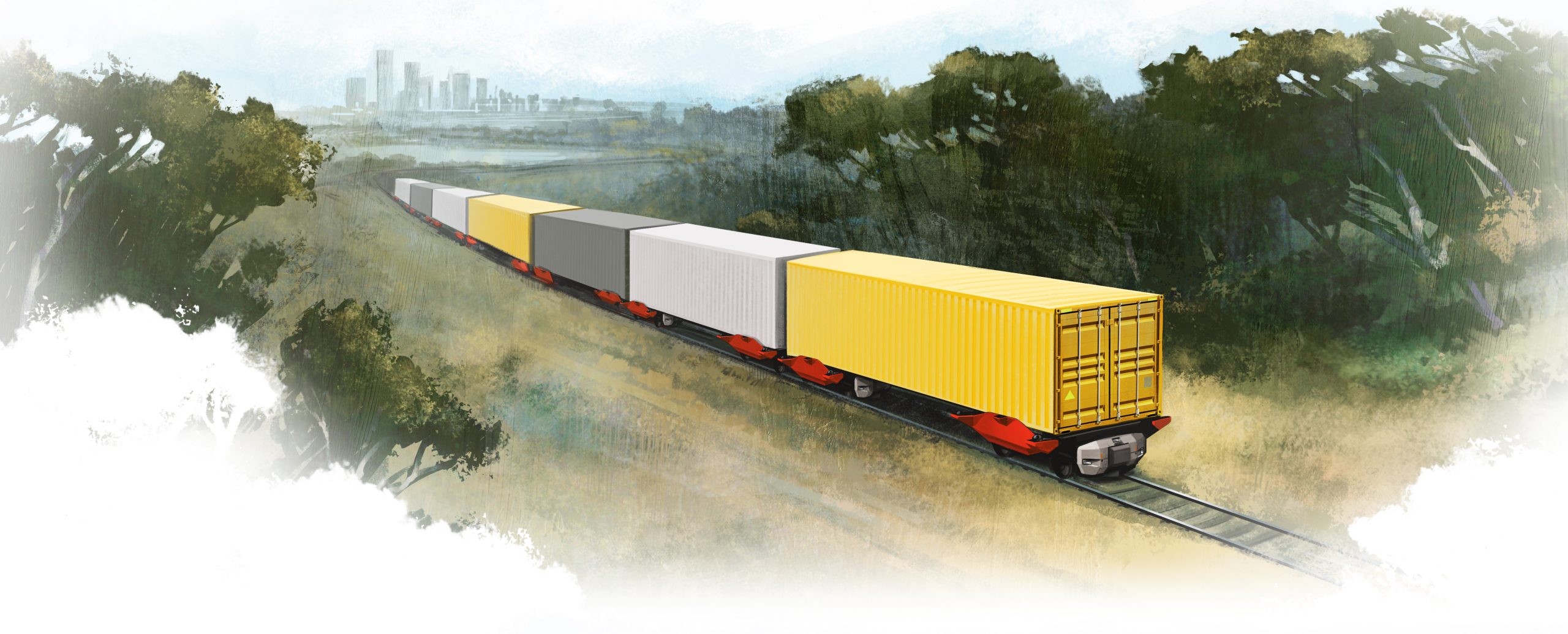Former SpaceX engineers launch second-generation autonomous freight vehicle

Parallel Systems has just introduced its second-generation autonomous battery-electric rail vehicle. The US-based company aims to revolutionise freight transport by introducing its autonomous, platooning vehicles on the same tracks as conventional trains.
The second generation vehicle began field testing of hardware and software at Parallel’s Southern California test track in November 2022. The vehicle has already completed preliminary testing for emergency stopping, braking performance, dynamics, thermal management, GPS, communications, and towing. All test results are correlating well with design expectations, commented Matt Soule, Co-founder & CEO at Parallel Systems. The company was founded in 2020 by a group of former SpaceX engineers and aims to increase the utilisation of today’s US rail network by converting part of the 700 billion US trucking business to rail.
Track-worthiness testing will be conducted with MxV Rail, a wholly-owned subsidiary of the Association of American Railroads, in Pueblo, Colorado, in 2024. “Testing this vehicle generation and supporting systems is a critical step in our product development to inform our commercial product”, said Soule, who previously was Head of Avionics at SpaceX. “With less than 3 per cent of the 143,000 miles of US railway occupied by active trains at any given moment, there’s immense opportunity to shift freight from the overburdened trucking industry to rail. In addition to addressing the truck driver shortage, converting 100,000 trucking miles to Parallel’s rail zero-emissions vehicles would eliminate up to 175 tons of carbon dioxide from the atmosphere.” The technology is designed to also work on more dense railways and help improve railroad utilisation.
Second generation
In comparison to the company’s first developed vehicle, the most notable visual update of the second-generation vehicle is a spanning structure that connects each end of the railcar to accommodate a standard-sized shipping container. Parallel plans to offer a portfolio of solutions and this allows the company to test the new architecture that is well-suited for international markets and is more cost-effective.
The second-generation vehicle includes both autonomous and remote operation features. While initial pilot tests will operate under supervision at all times, the autonomous system will be installed, learning and improving as Parallel further develops its autonomous capability, according to the company.
Currently, Parallel Systems has produced three of the second-generation vehicles, with three more in production, and more are expected to follow. Parallel is working with customers to bring the second-generation rail vehicles to existing rail networks in the US and internationally.

Platooning feature
Parallel Systems aims to demonstrate the platooning feature of the second-generation vehicle later this year. Each Parallel railcar is individually powered by a battery-electric traction motor and can form platoons of up to 50 cars to reduce energy consumption and efficiently use rail network capacity. The platooning is fully automated, and based on a bi-directional camera-based perception system.
The railcars don’t need to hook or unhook, and simply move close to each other and then initiate contact through bumpers to form platoons, states Parallel Systems. Once contact is made, each vehicle maintains a set force with the one in front by regulating tractive effort. The small air gap and pushing action through railcar bumpers reduce overall aerodynamic drag of the platoon, improving energy efficiency.
Parallel was awarded around 4,4 million US dollars by the Department of Energy as part of its Advanced Research Projects Agency-Energy (ARPA-E) initiative, which is helping to fund the development, production and testing of the second generation electric rail vehicles. The results of that testing will influence the next vehicle generations as Parallel shifts to commercial production.

From test track to pilot
Earlier this summer, Georgia Central Railway and Heart of Georgia Railroad, subsidiaries of Genesee & Wyoming (G&W), filed a petition with the Federal Railroad Administration (FRA) to pilot new zero-emission rail-freight technology from Parallel Systems on portions of their rail lines. They believe the technology has the potential to capture new container businesses moving to and from the Port of Savannah, as well as reinvigorate traffic on rural rail lines and revive inland ports in Georgia – all while removing trucks from the region’s roads and reducing carbon emissions.
If approved, the multi-phased pilot would begin next year and be overseen by the FRA, G&W and Parallel Systems – allowing G&W and Parallel Systems to demonstrate the technology in a field setting while using carefully developed protocols to ensure the pilot is operated in a safe, controlled manner. The company also plans to expand to Australia, Europe, and beyond from there, but there is no specific timing for testing the vehicles there yet, concluded Soule.




